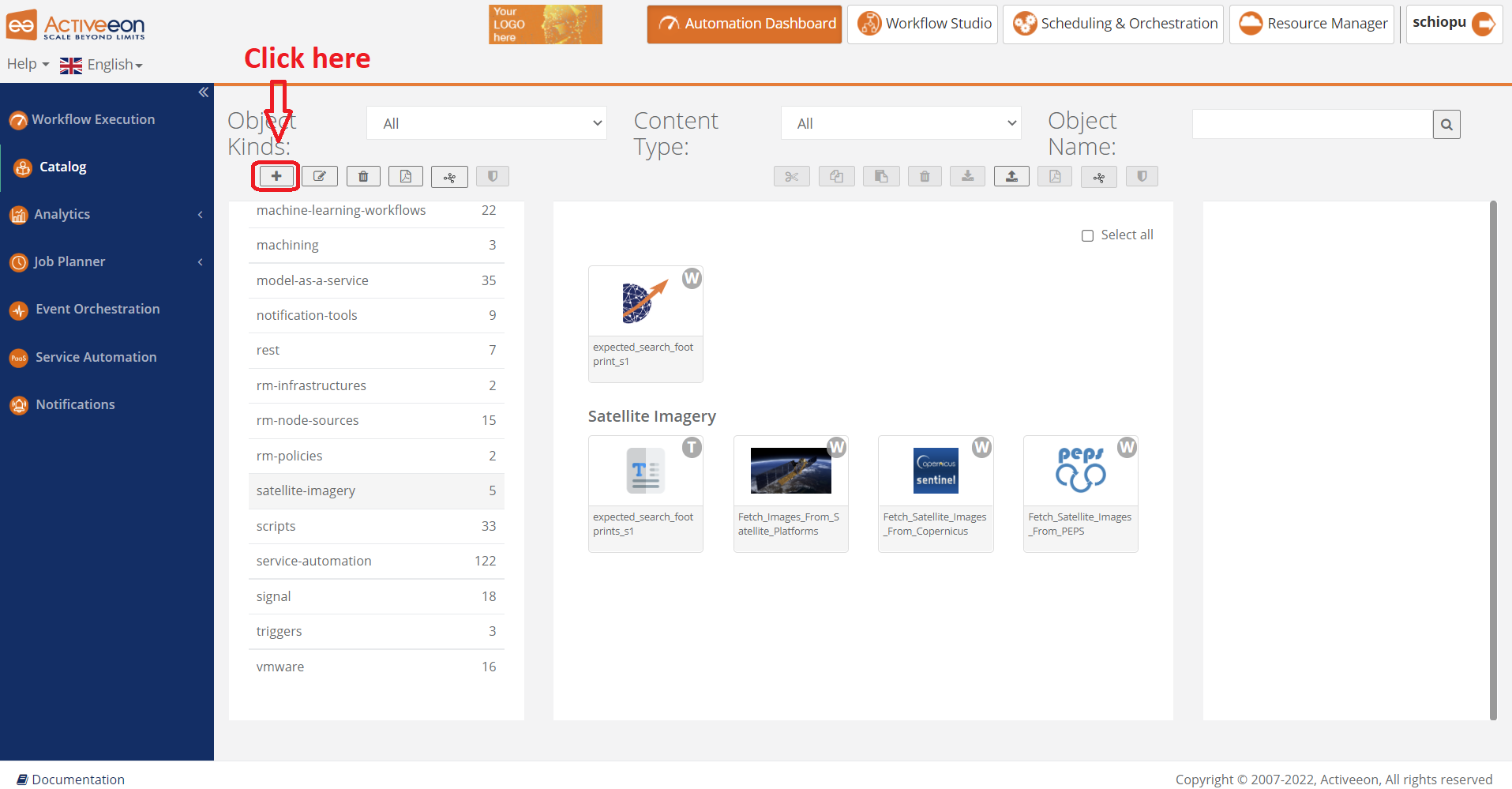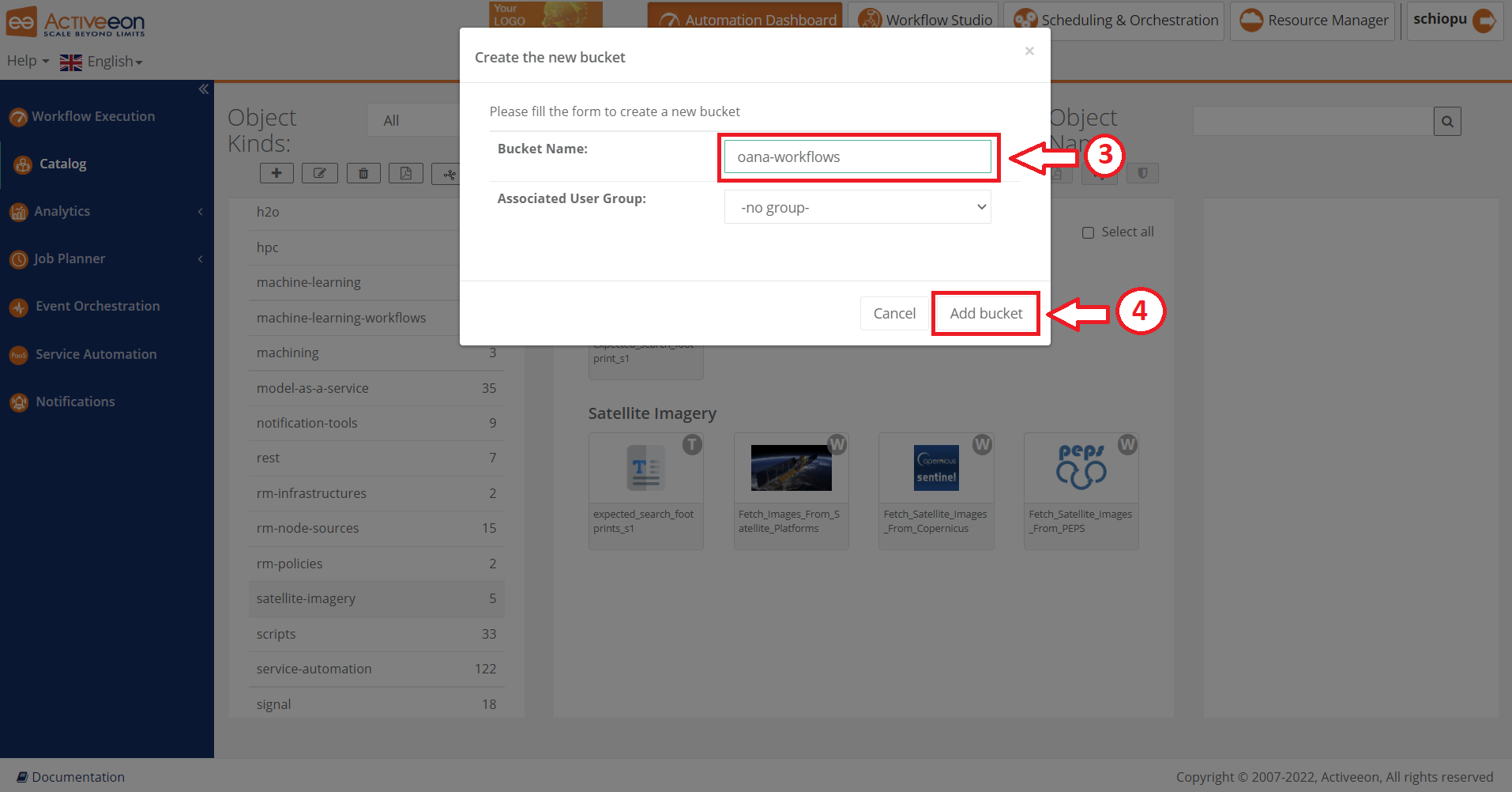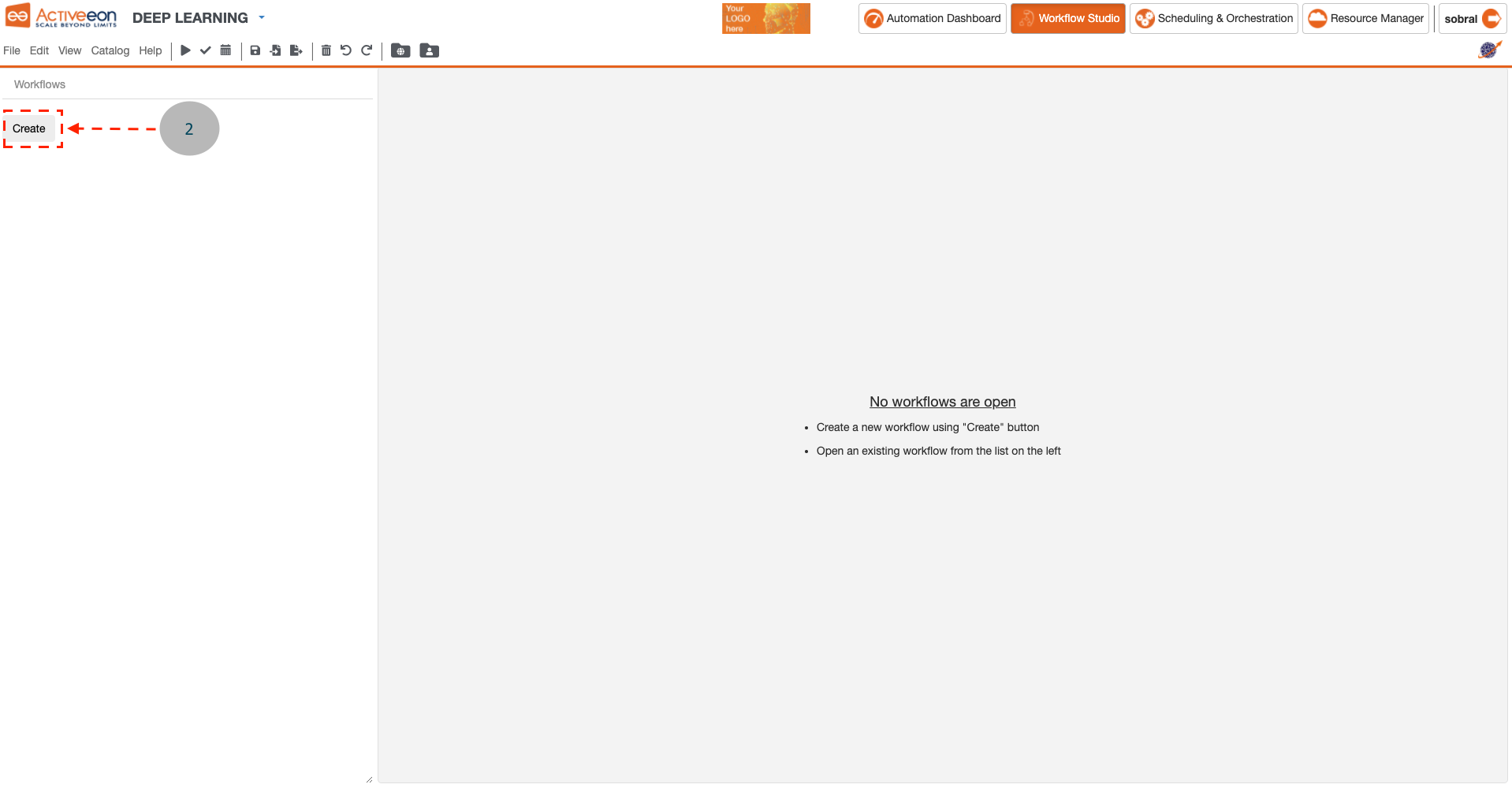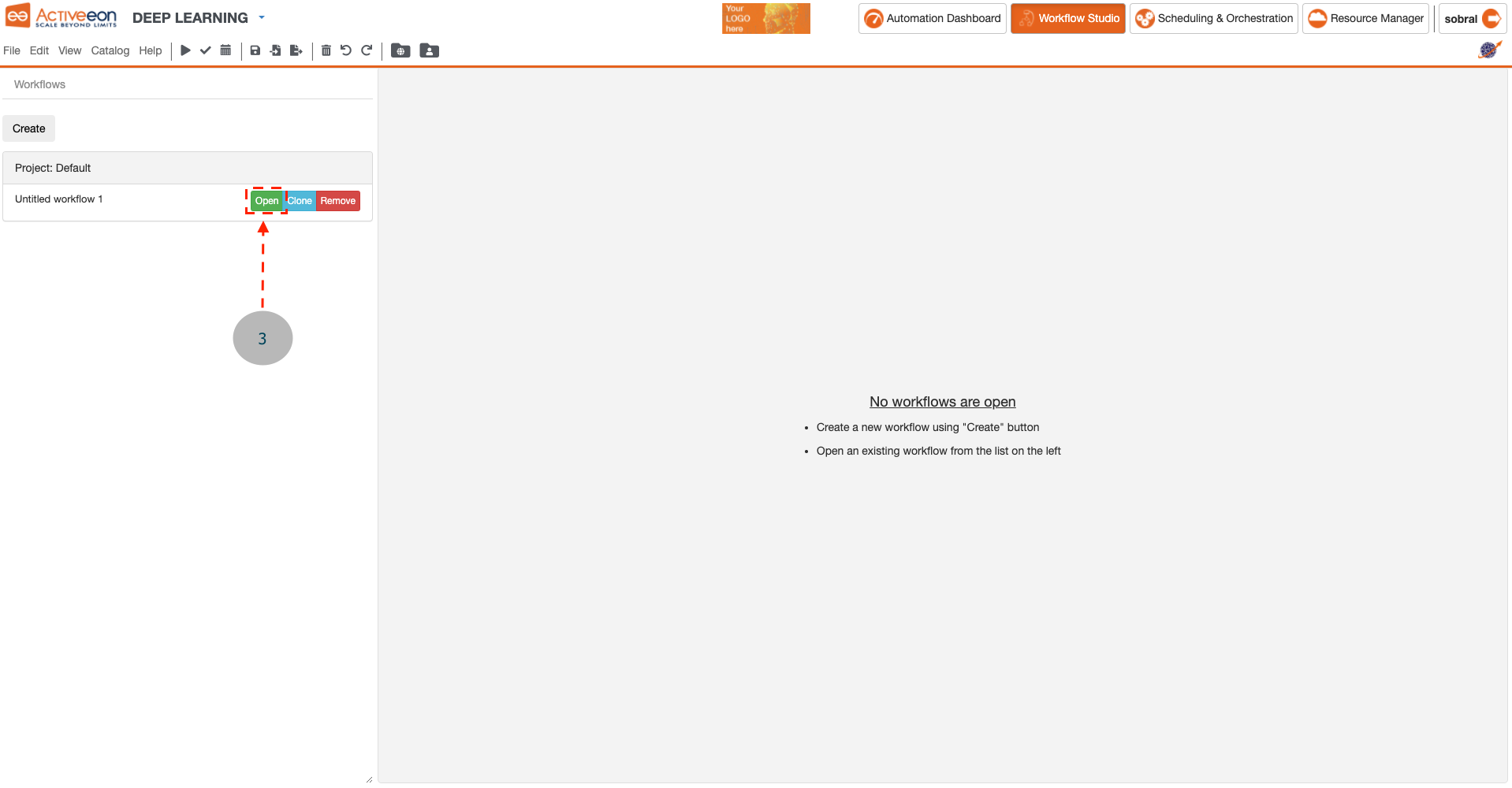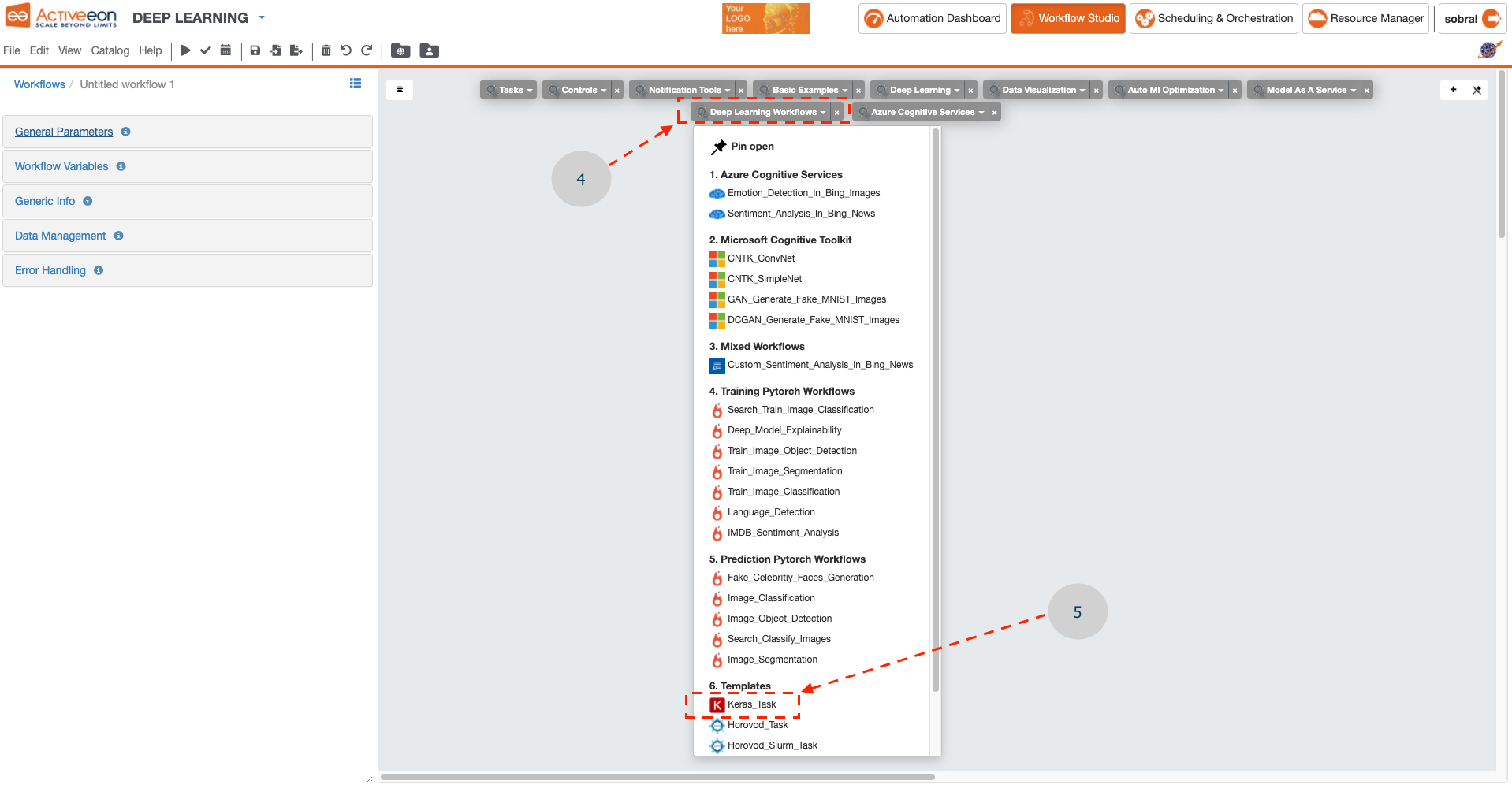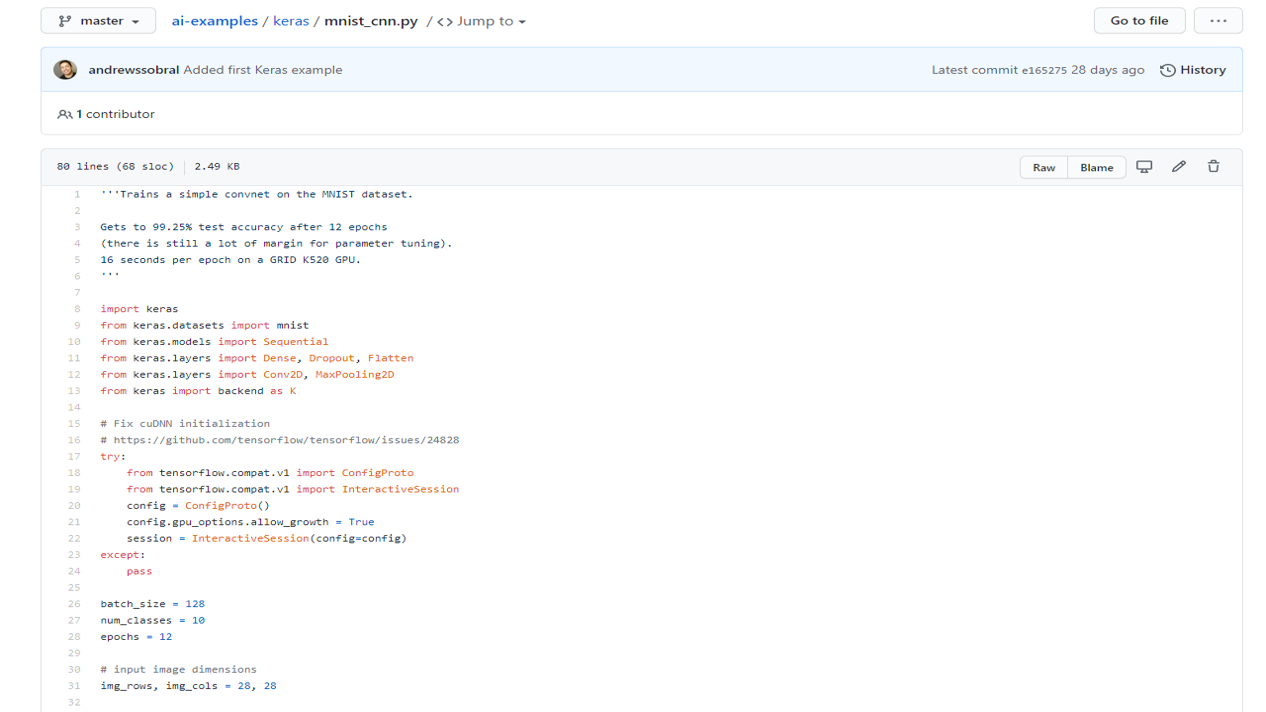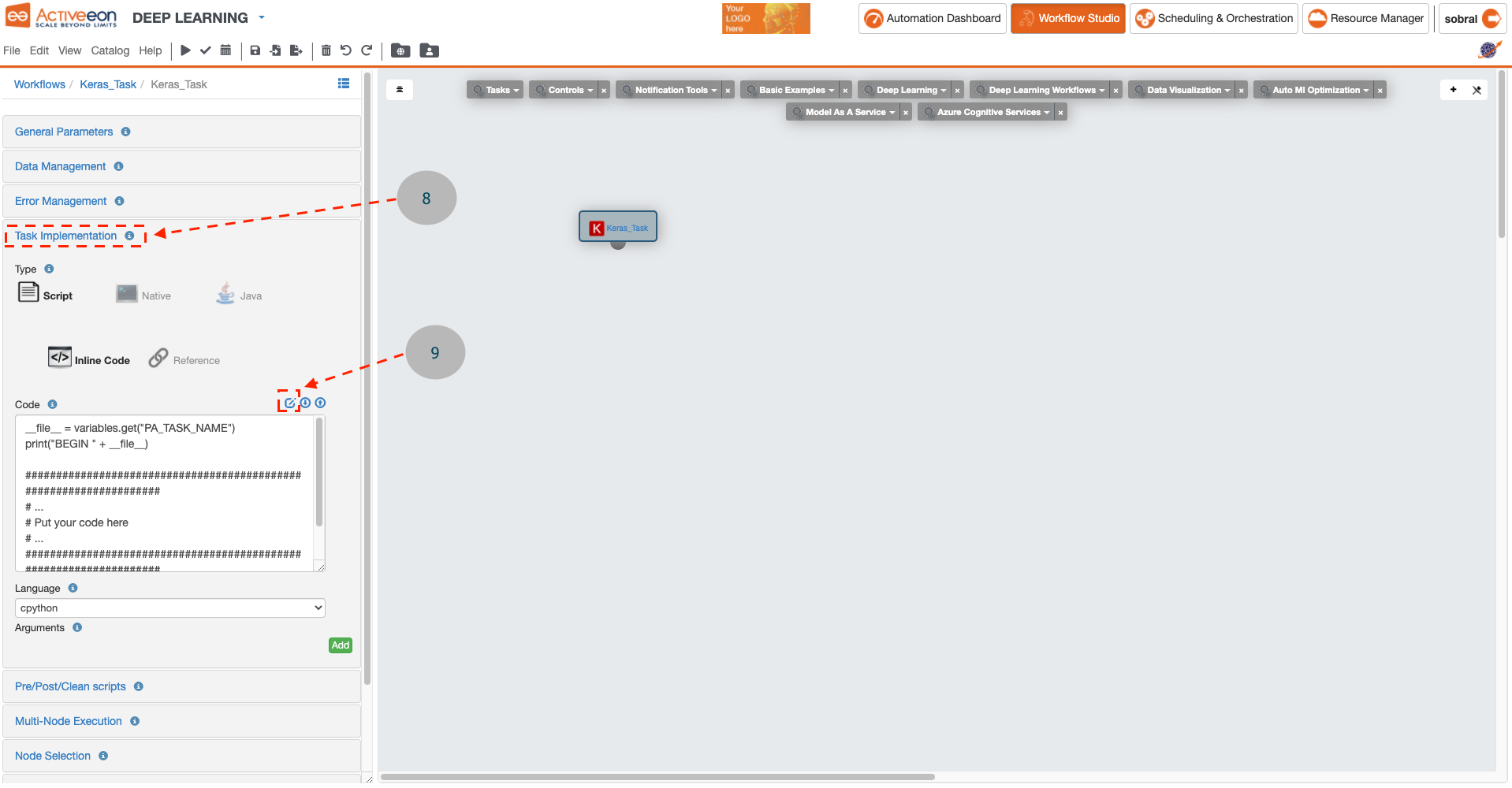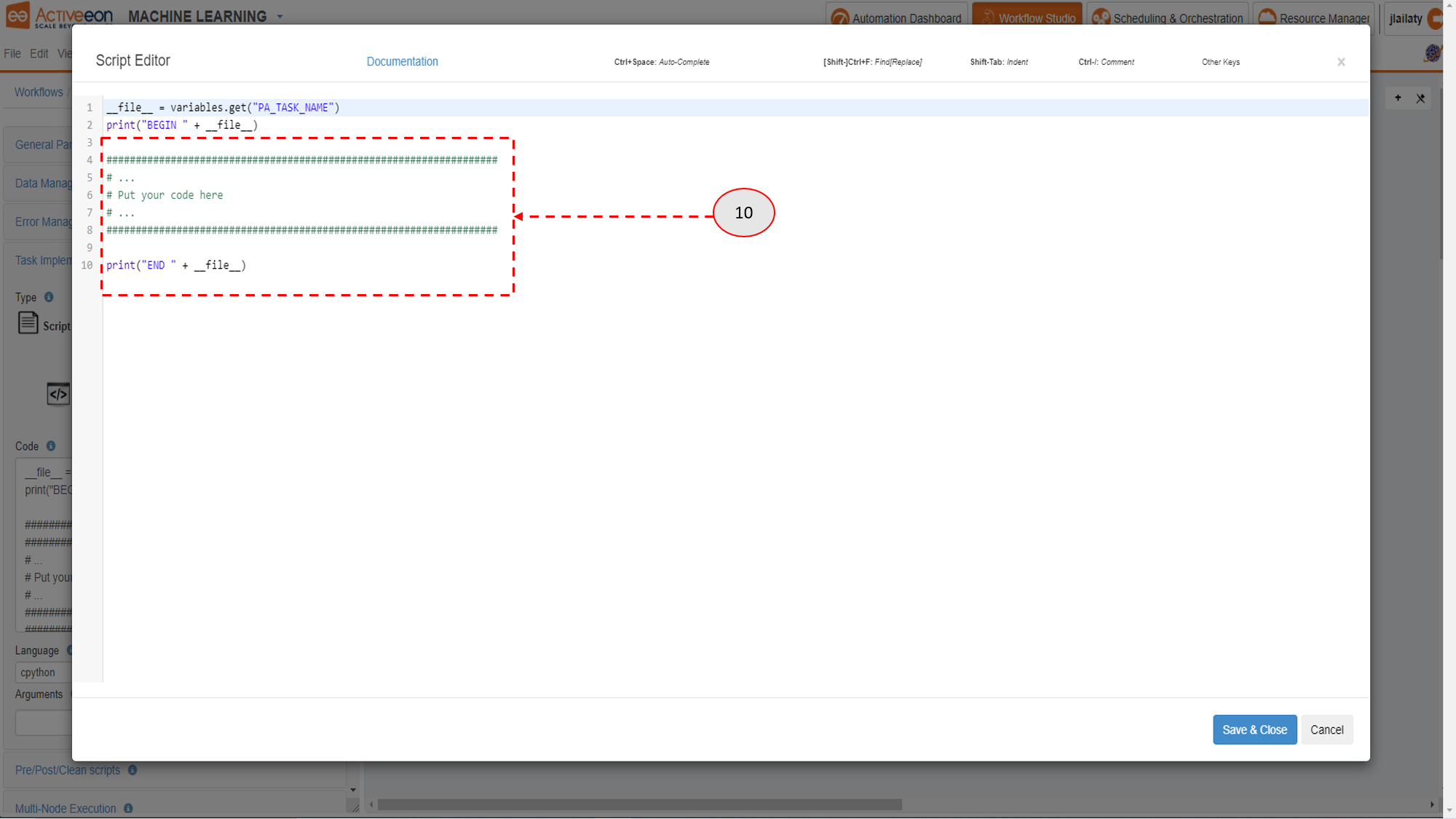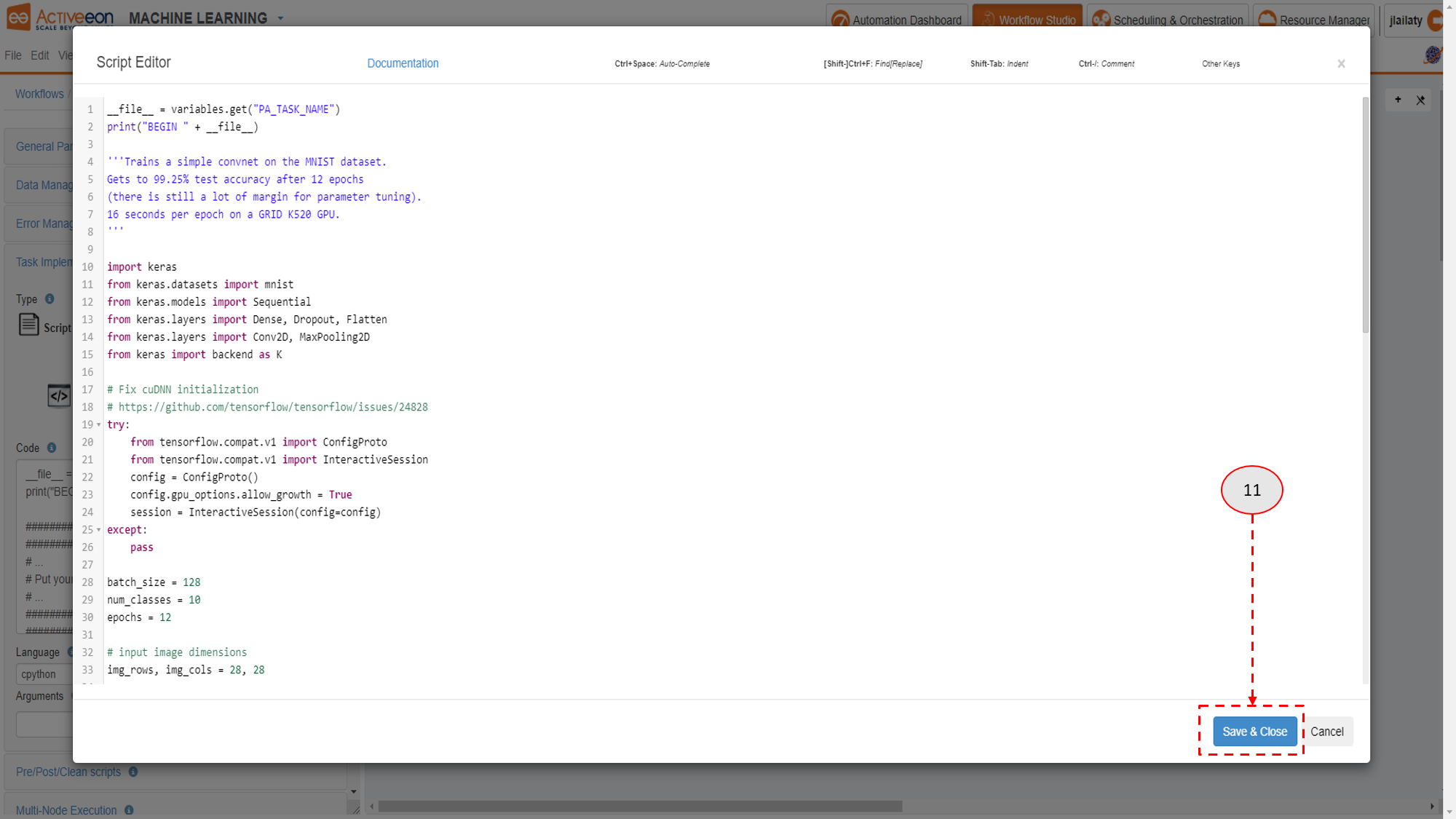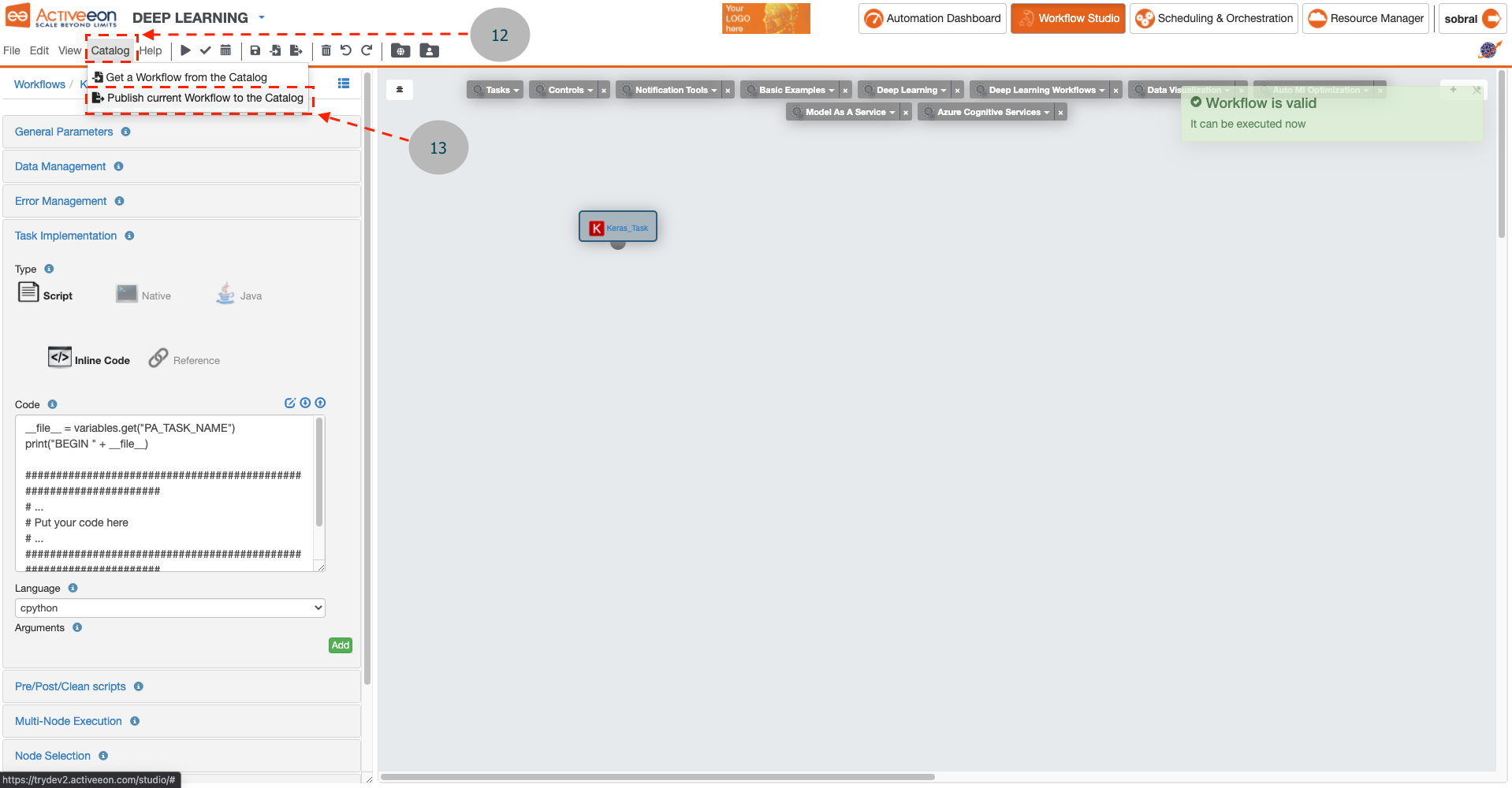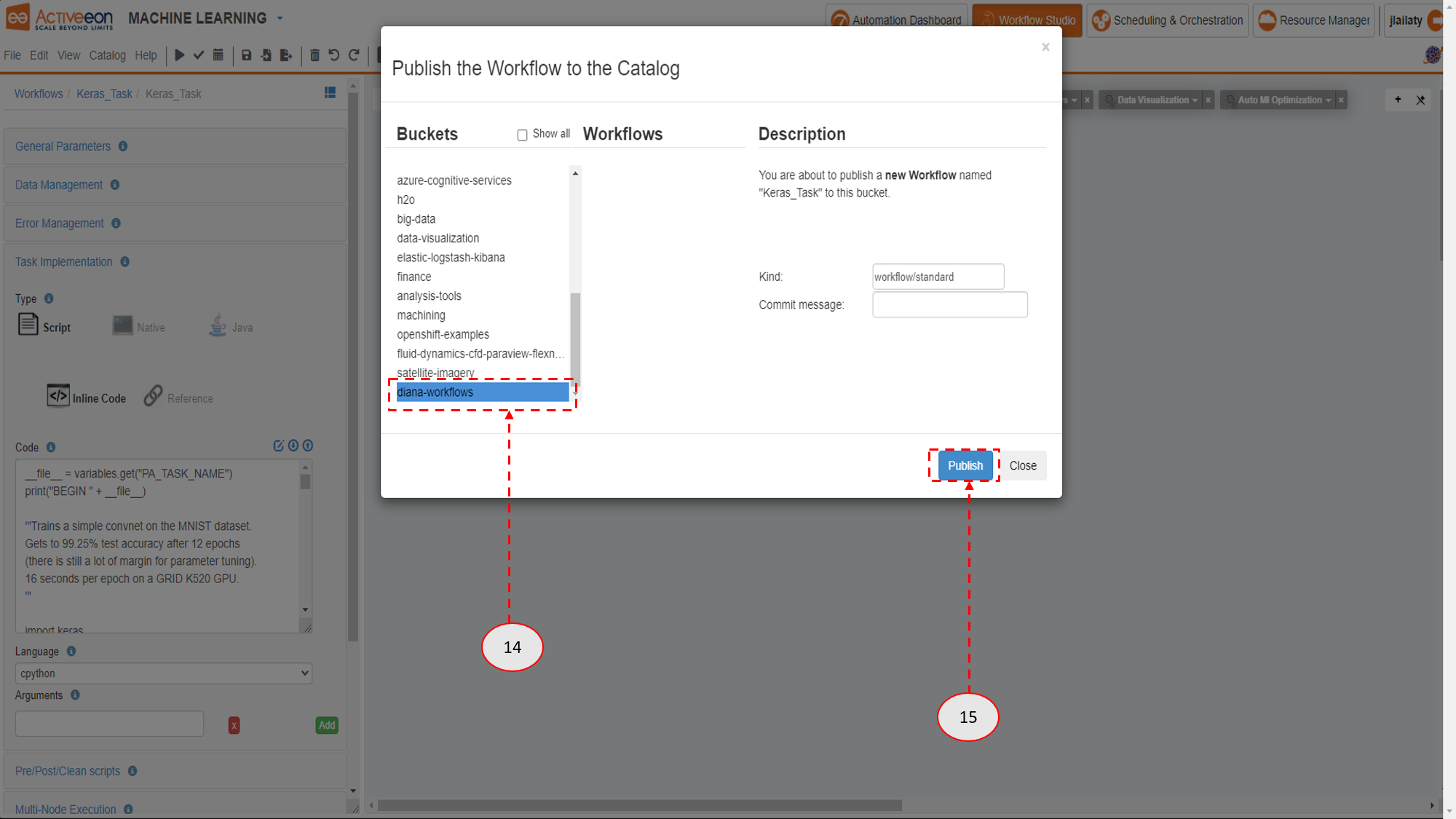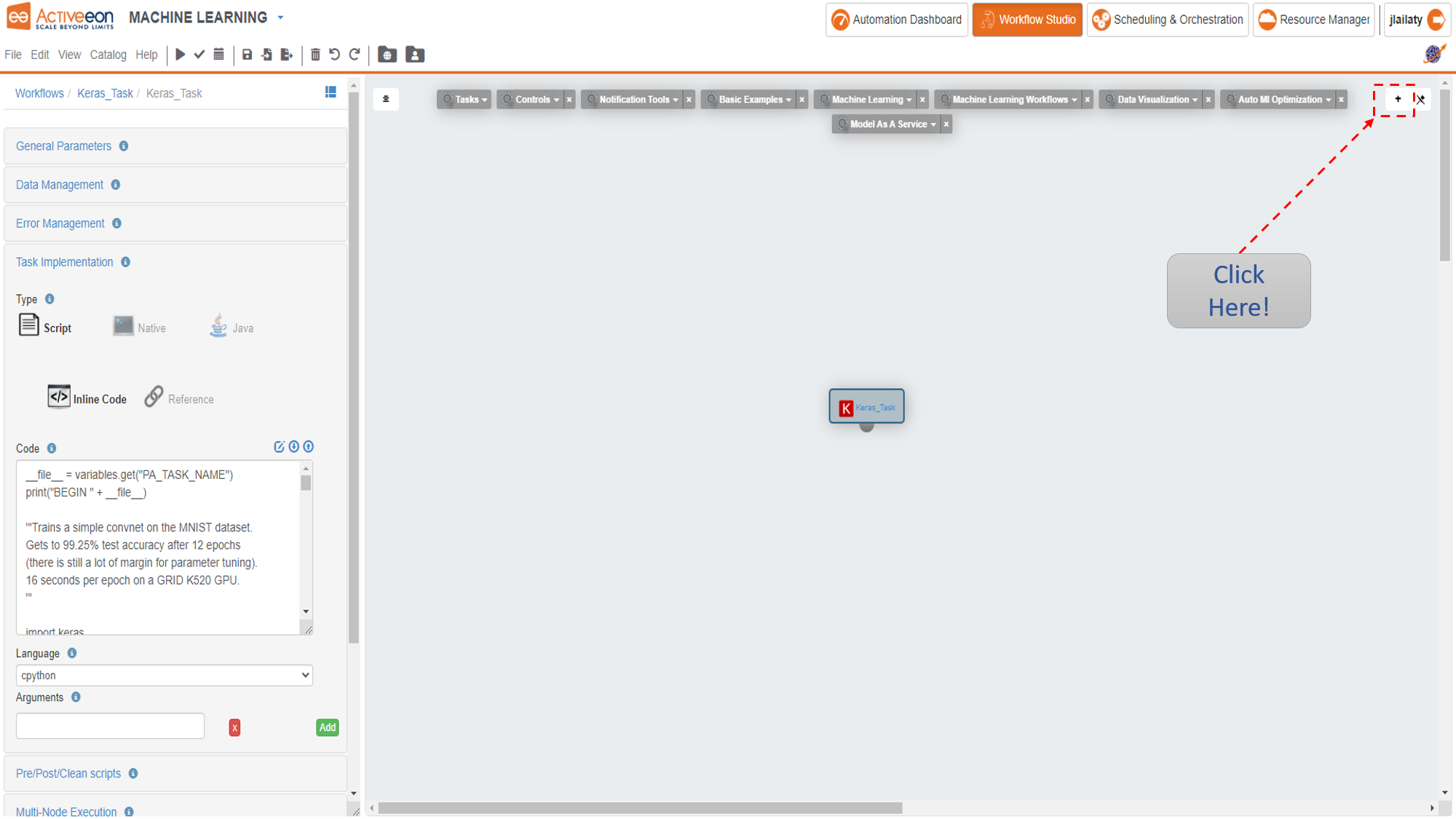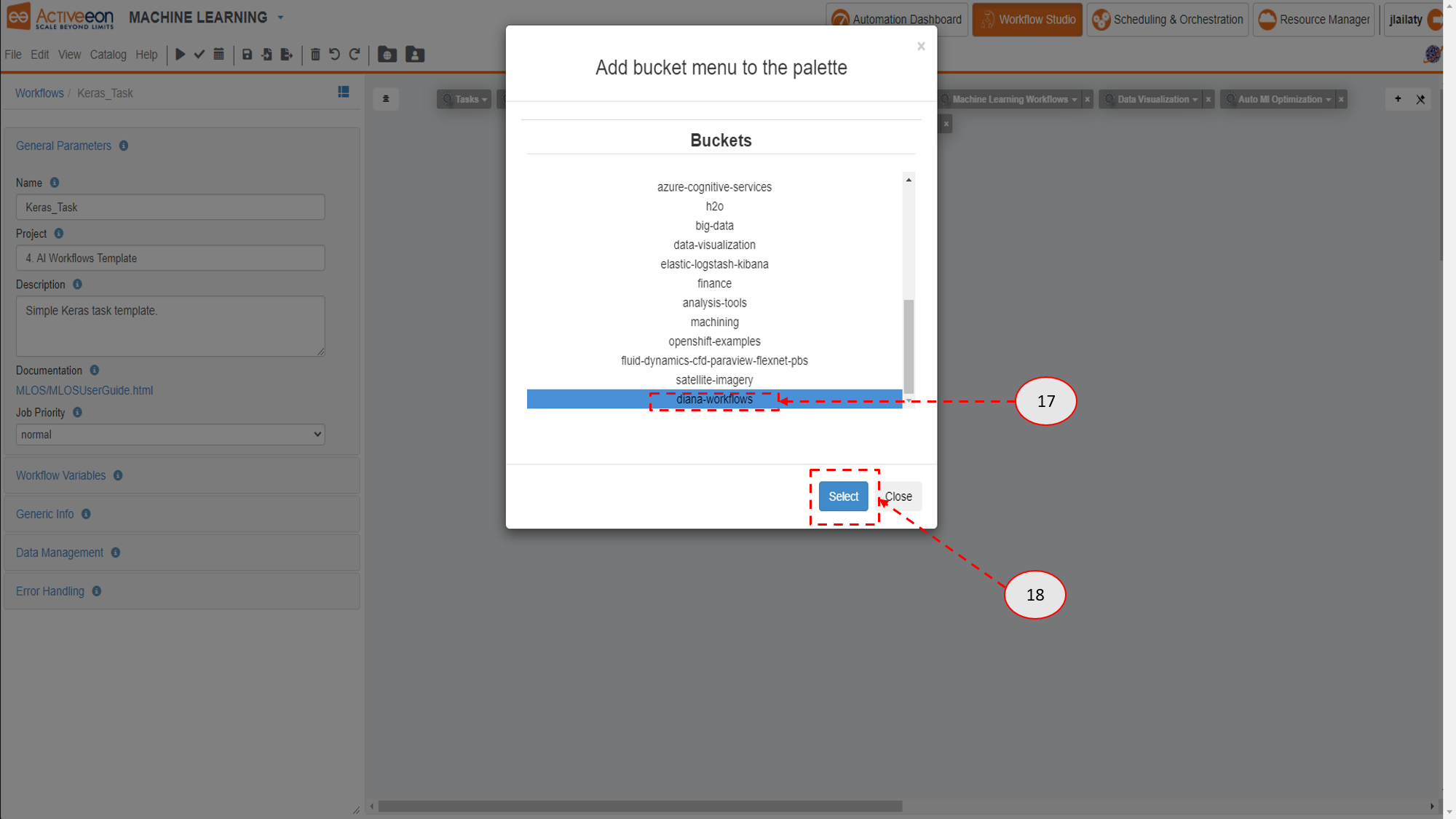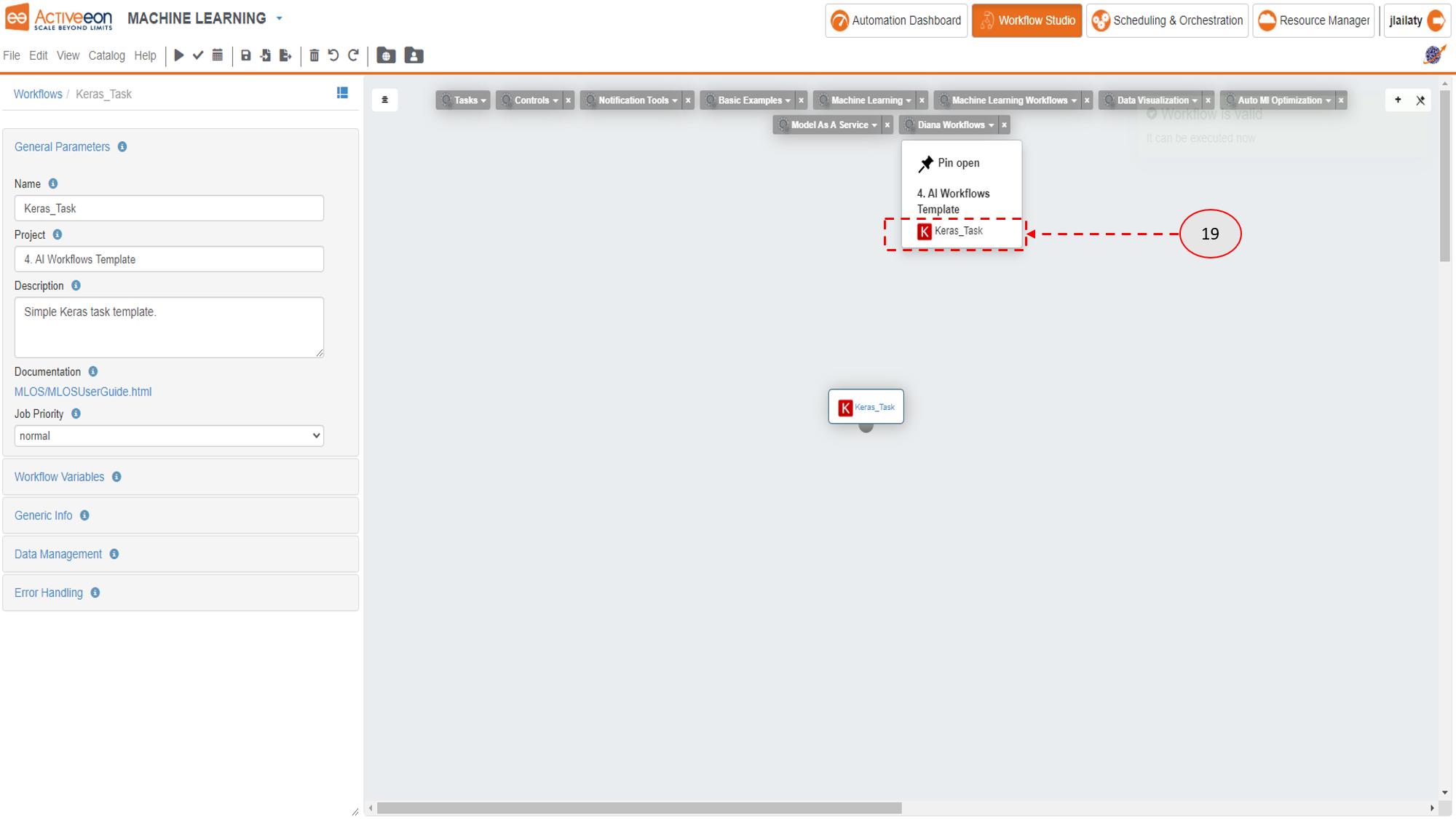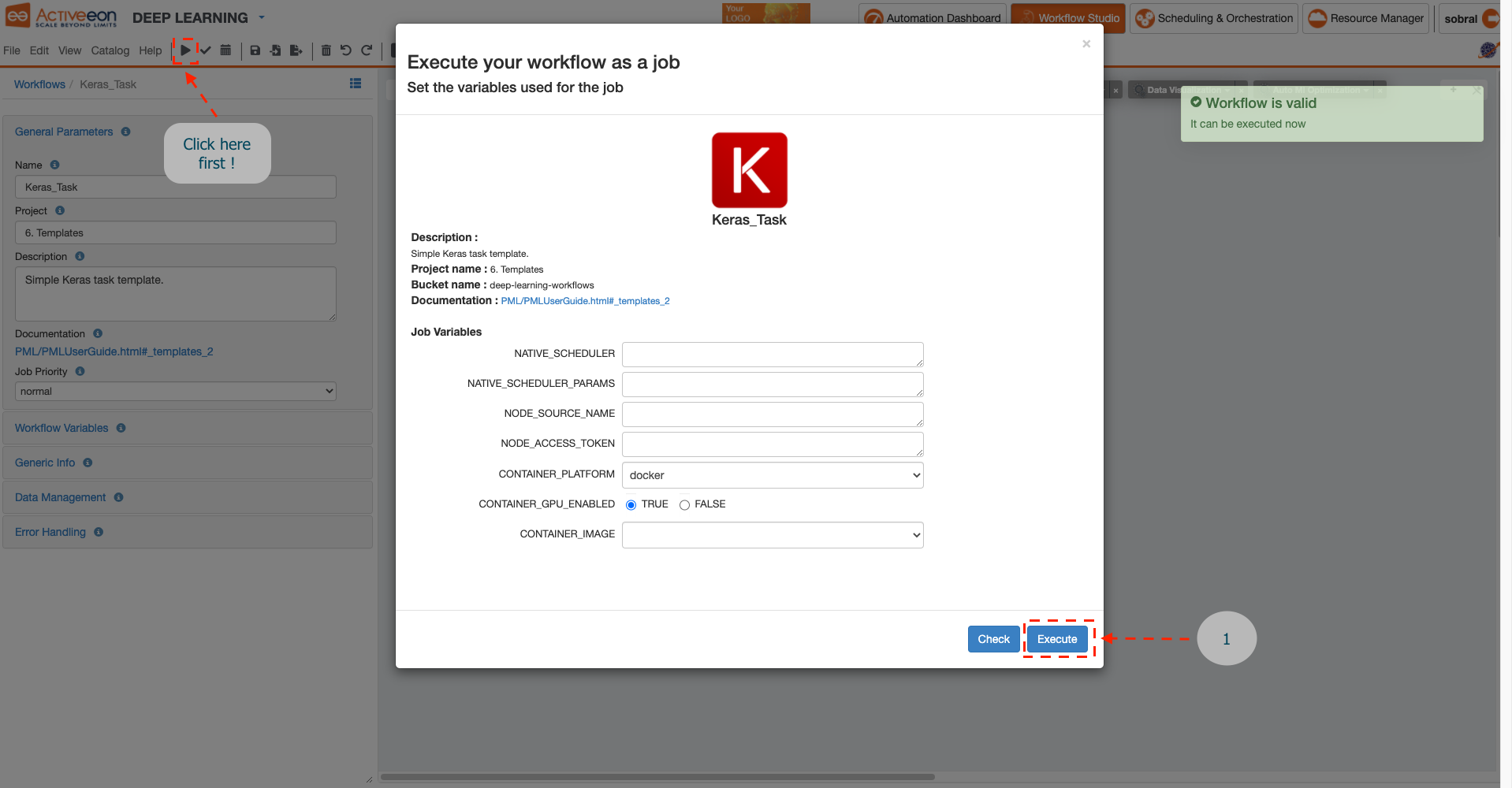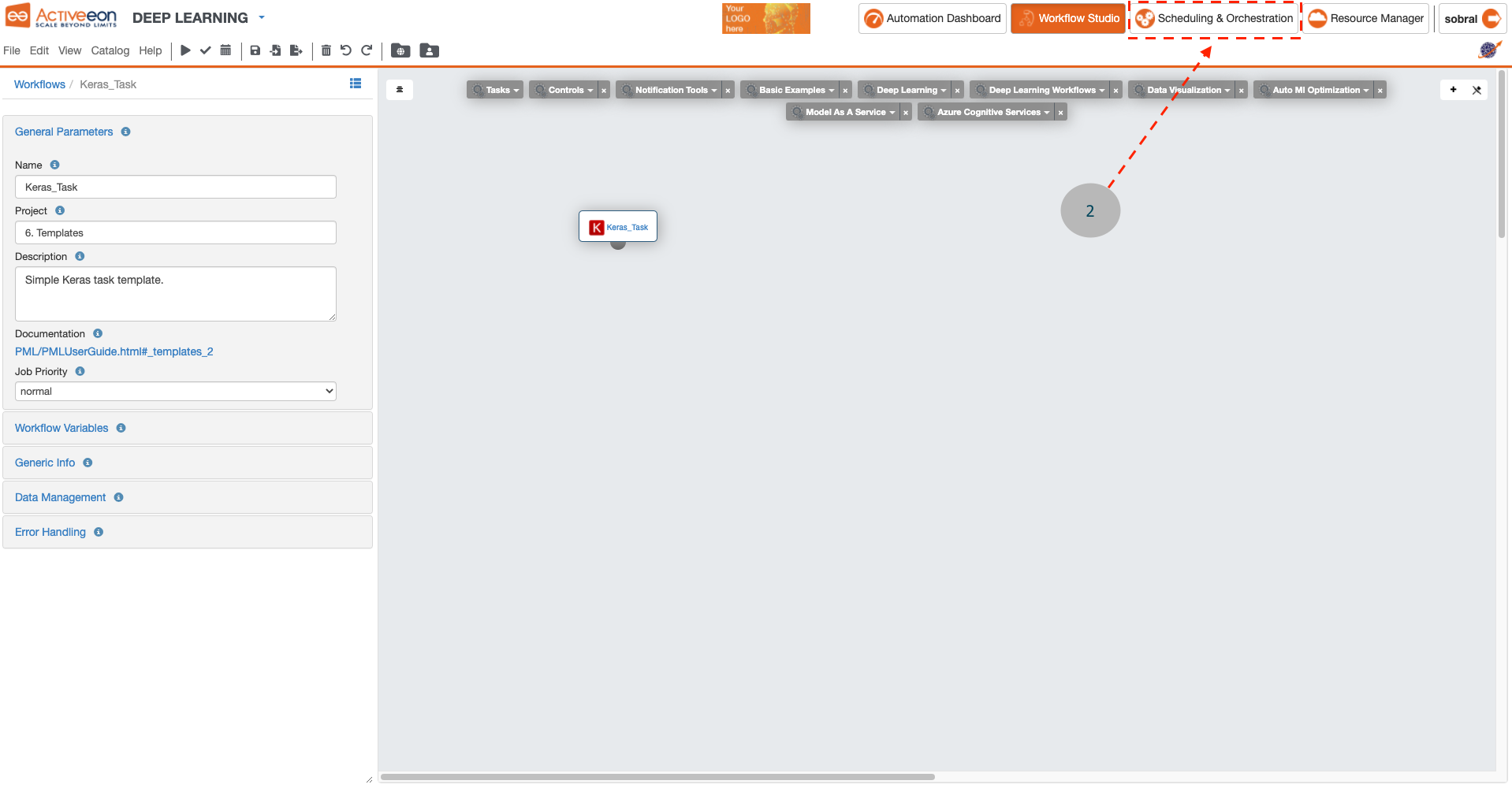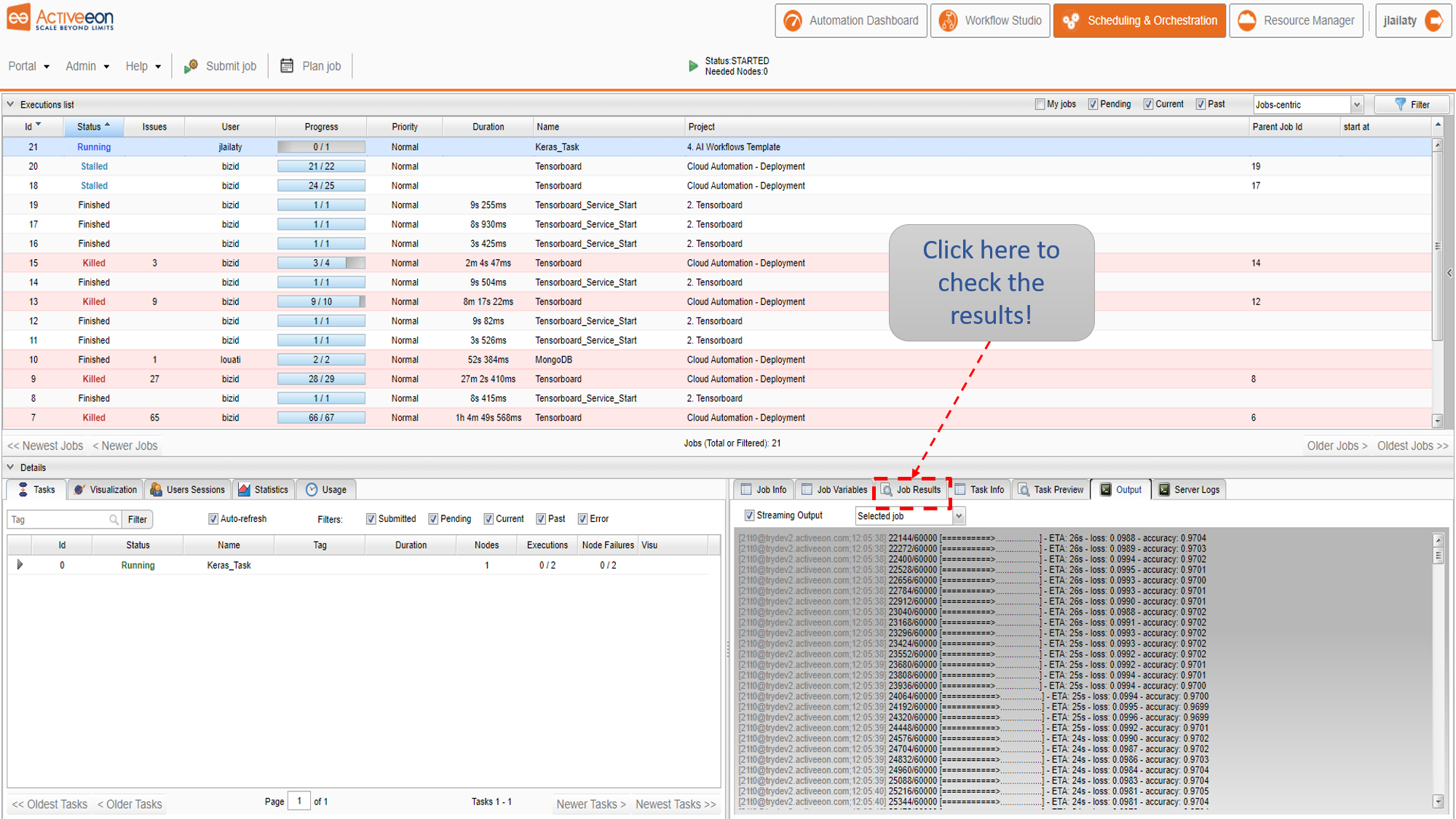ProActive Quickstart -Deep Learning Workflow from Scratch
ProActive AI Orchestration (PAIO) is an interactive graphical interface that enables developers and data scientists to quickly and easily build, train, and deploy machine learning models at any scale. It provides a rich set of generic machine learning tasks that can be connected together to build basic and complex machine learning workflows for various use cases such as: fraud detection, text analysis, online offer recommendations, prediction of equipment failures, facial expression analysis, etc. These tasks are open source and can be easily customized according to your needs. PAIO can schedule and orchestrate executions while optimising the use of computational resources. Usage of resources (e.g. CPU, GPU, local, remote nodes) can be quickly monitored.
This tutorial will show you how to:
- Create your own Catalog bucket where you can store your own workflows.
- Build your first deep learning workflow in ProActive from scratch.
- Submit it to the scheduler and monitor its execution.
1 Create your own Proactive Catalog Bucket
Following the below instructions, you will be able to create your own catalog bucket, where you can store your own workflows. Slide through the images for the steps illustration.
- Open ProActive Automation Dashboard home page.
- Click on the Catalog menu.
- Put in the Bucket Name field your catalog name (e.g. firstname_workflows).
- Click on the Add Bucket button.
2 Create and Configure the Workflow
Following the below instructions, you will be able to create your first deep learning workflow. Slide through the images for the steps illustration.
- Open ProActive Workflow Studio home page.
- Create a new workflow using the Create button.
- Click on Open the Untitled workflow 1.
- Click on Deep Learning Workflows menu.
- Drag and drop the Keras Task.
- Go to https://github.com/ow2-proactive/ai-examples/blob/master/keras/mnist_cnn.py repository.
- Copy all code.
- Click on the Task Implementation menu.
- Click on the Edit button.
- Paste all code in the ‘Put your code here’ section.
- Click on the Save & Close button.
- Click on the Catalog menu.
- Click on the Publish current Workflow to the Catalog button.
- Click on your catalog name (e.g. firstname_workflows).
- Click on Publish to save your workflow.
- Click on the add[+] button.
- Click on the firstname_workflows under Buckets.
- Click on the Select button.
- Now you can see the workflow you have just published.
3 Submit and Visualize the Job Results
Following the below instructions, you will be able to submit your workflow and visualize the results. Slide through the images for the steps illustration.
- Click on the Execute button to run the workflow.
- Click on the Scheduling & Orchestration button to track the workflow execution progress.
- Click in the Visualization tab and track the progress of your workflow execution.
- watch PAIO demo video
- the tutorial on hyper parameter optimization (automl)
- go through our documentation for more details

